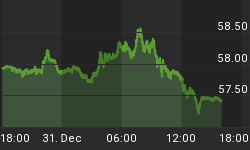The following is part of Quick Pivot that was published for our subscribers June 22, 2011.
SIGNS OF THE TIMES:
"Gold to Reach $5000 Due to Supply Shortages"
"Exhaustive report by Standard Chartered rests upon 'central banks haveturned from being net sellers to net buyers of gold.'"
~ CNBC, June 14, 2011
It took a long time for commonsense to overwhelm book-learning. Central banks becoming net buyers is an important and practical step away from financial demagoguery.
Standard Chartered is a big and diverse bank and their research department should be complemented for such a bold conclusion. However, we could not endorse the price target as it is based upon fundamental analysis of supply and demand, which in any metal is often treacherous.
Typically gold's real price, as determined by a reliable consumer price index sets a significant low in the year a great financial mania concludes. This time around, the reversal occurred in May 2007. As we calculate it, our Gold/Commodities set a low of 143. On the first post-bubble recession this soared to 518 and represented an increase in operating margins for gold producers.
Then with the first business expansion this turned down as commodities enjoyed a cyclical move that ended with a mania. Gold's real price slumped to 303 early in the year and in setting the uptrend in mid-April anticipated the selloff of stocks and commodities.
Quite likely, this is on a cyclical increase as the global economy enters a cyclical recession.
One of the features of the post-bubble world is weak recoveries and severe recessions. Even mainstream economists recognized that the last recession was the worst since the early 1930s.
Gold's real price is anticipating the start of a recession and so is the dramatic reversal in silver prices relative to gold. The latter is a very old indicator of an important change in financial markets. Just as old and reliable as the recent reversal from narrowing credit spreads to widening.
Typically, post-bubble contractions have prevailed for some twenty years as gold's real price improved. This has made gold mining the premier industry as orthodox business and industry suffer chronic pricing pressures.
Gold's nominal price is of interest to traders, some of whom are positioning to "punish" the corrupt Federal Reserve System. Serious investors know the importance of gold's real price.
Every bull market climbs a wall of worry and then in a rush of confidence leaps over - only to find Murphy waiting.
Murphy's Law states "What can go wrong will go wrong", and while Murphy has been reliable, unless he was an historian he could not imagine the distress of a post-bubble contraction.
What's Next?
The possibility of a rebound showed best in the S&P. Two weeks ago this page noted that if the stock market remained down for a week, a Capitulation would register. We also had a target of 1250 and Thursday's low was 1258 - close enough.
Monday's ChartWorks reviewed the "Springboard" pattern, which usually indicates a good relief rally. This is working out and as it improves it could provide relief to base metals as well.
This could run for some weeks and generate some overbought conditions.
Excessive speculation was expected to complete in April and fail. Financial markets would rebound and then likely churn around through the summer.
May's reversal in corporate spreads has become impressive enough to indicate further widening in September. This sector could also churn around through the summer.
Our Momentum Peak Forecaster has again earned a lot of confidence. In early December this indicated that a significant rush of speculation was building. In January it signaled that it could complete in March-April.
When the big action focuses upon commodities as in 1973 and in 1980 the signal has been close to the beginning of a recession.
Economic numbers and widening credit spreads seem to be confirming this melancholy possibility.
Link to June 24 'Bob and Phil Show' on Howestreet.com: http://talkdigitalnetwork.com/2011/06/goldman-sachs-murphy/
















